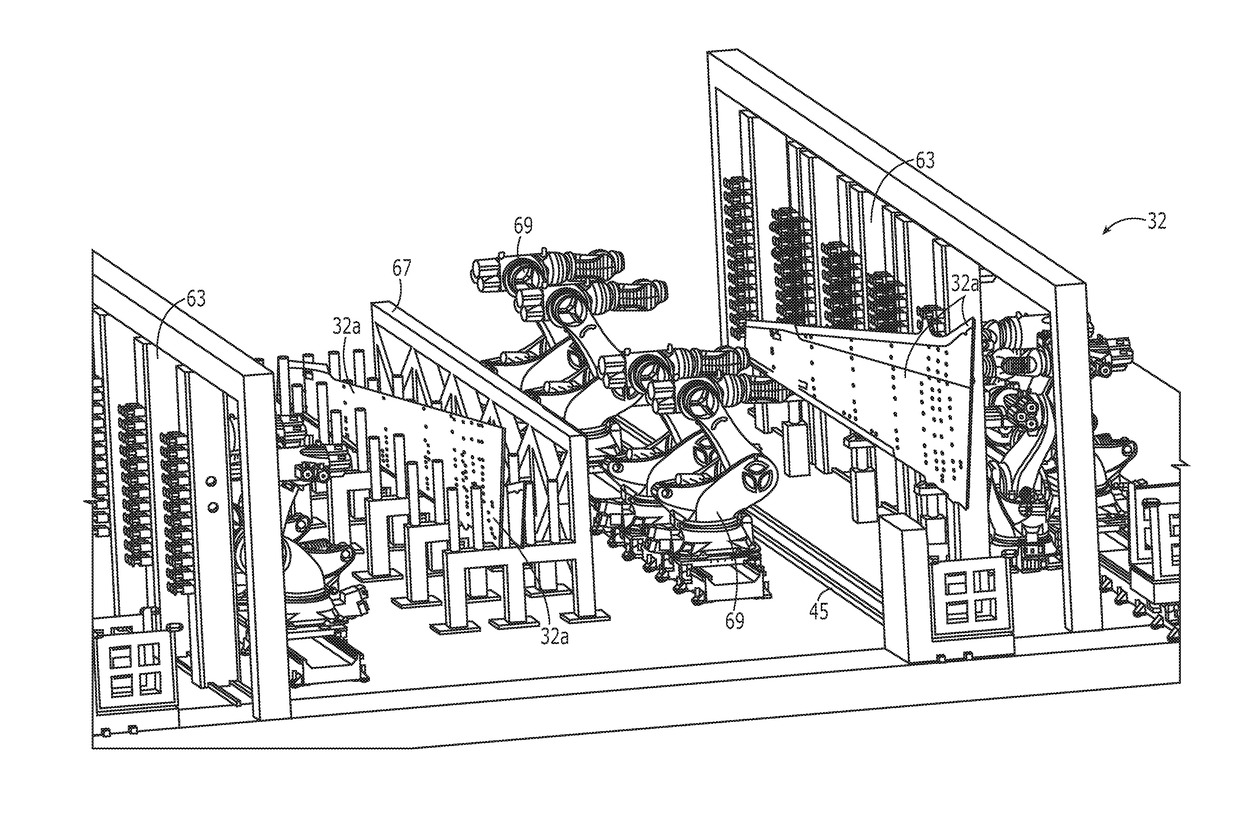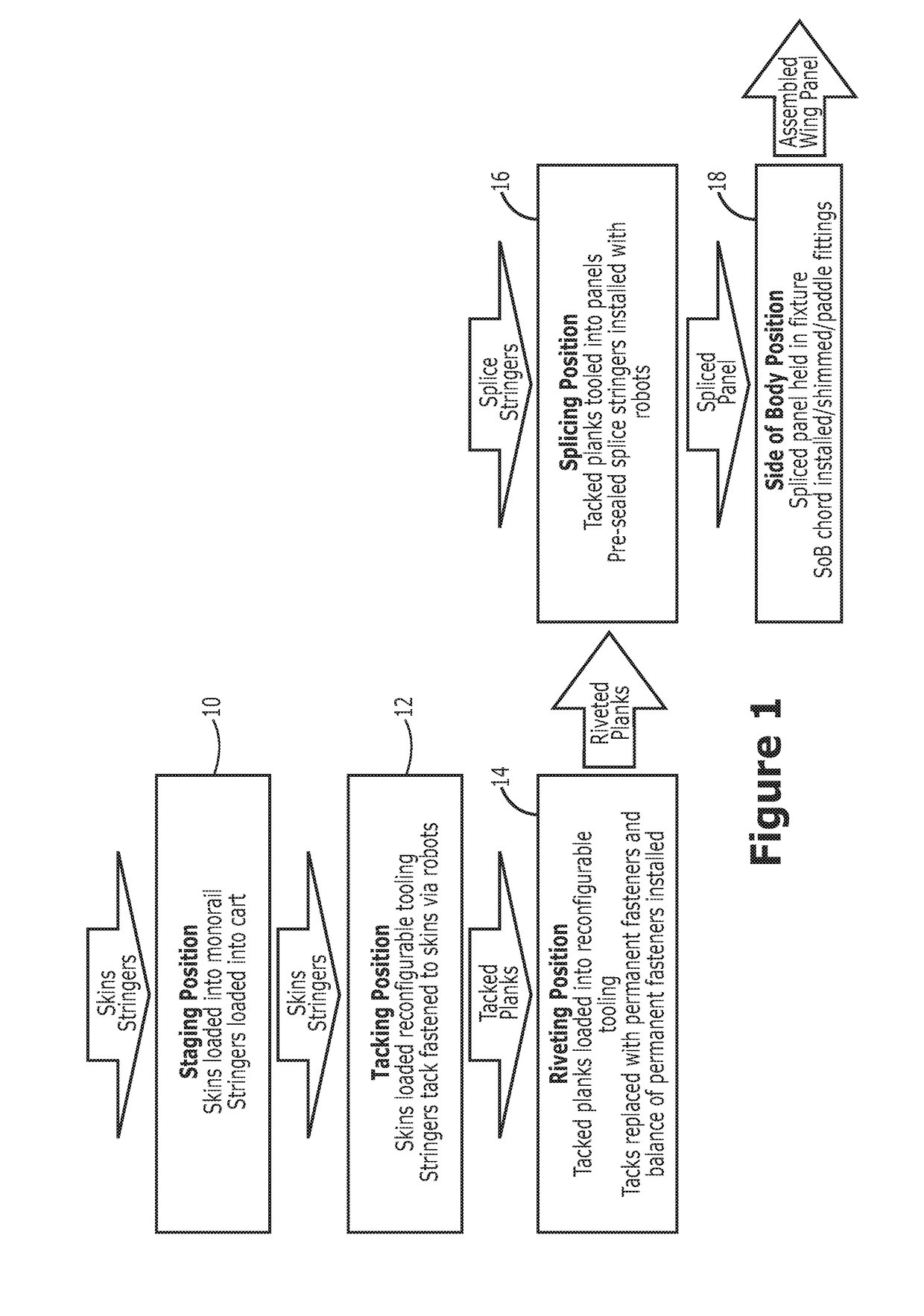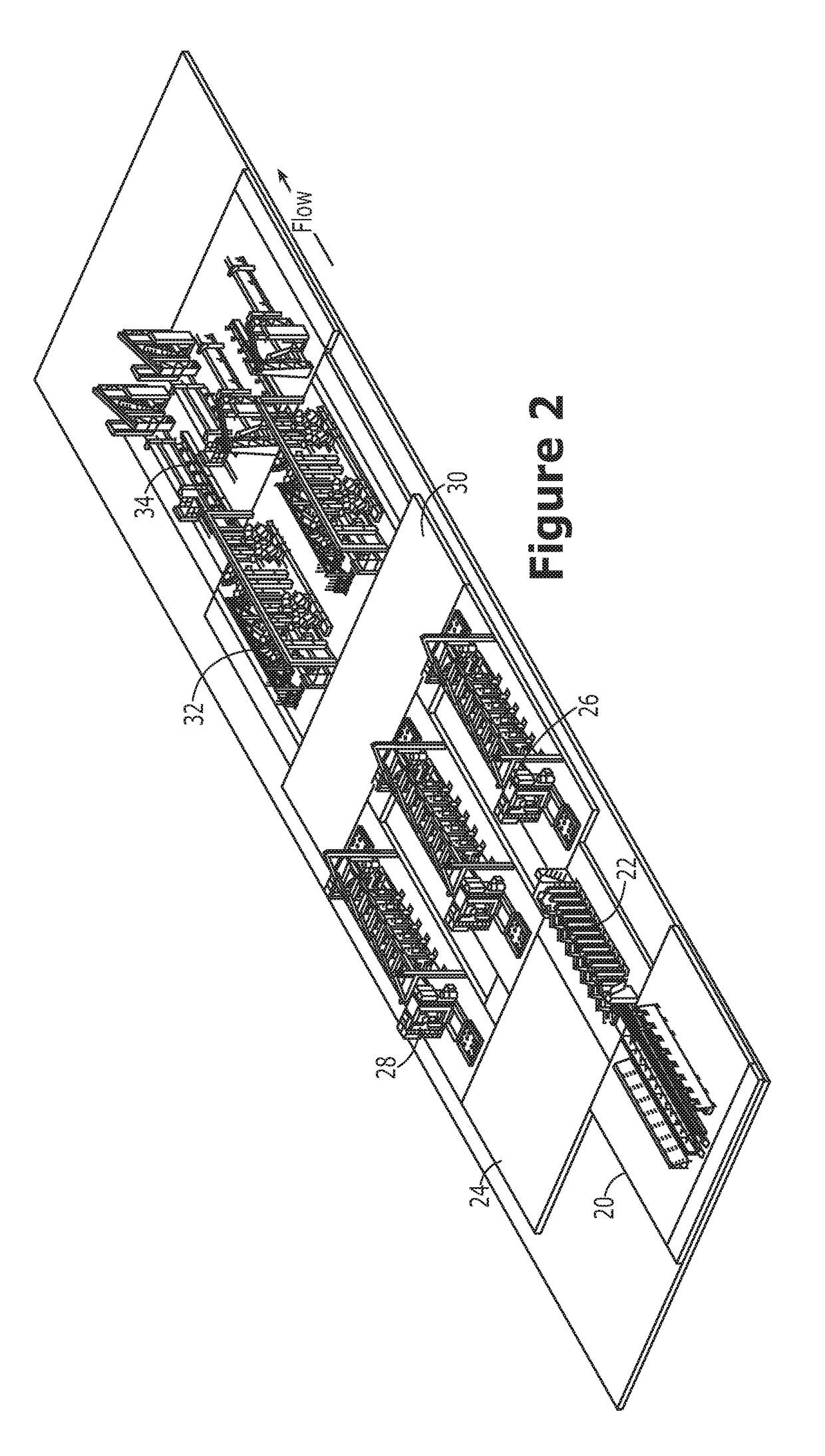System and method for manufacturing a wing panel
a technology of wing panels and manufacturing methods, applied in the field of wing panels, can solve the problems of requiring substantial human involvement in the manufacturing process of wing panels and, in turn, the assembling of wing panels to form a wing box, and the difficulty in increasing the rate at which wing panels are fabricated
- Summary
- Abstract
- Description
- Claims
- Application Information
AI Technical Summary
Benefits of technology
Problems solved by technology
Method used
Image
Examples
Embodiment Construction
[0025]Embodiments of the present disclosure now will be described more fully hereinafter with reference to the accompanying drawings, in which some, but not all embodiments are shown. Indeed, these embodiments may be embodied in many different forms and should not be construed as limited to the embodiments set forth herein; rather, these embodiments are provided so that this disclosure will satisfy applicable legal requirements. Like numbers refer to like elements throughout.
[0026]As shown in FIGS. 1 and 2, the system of one embodiment includes a plurality of sequential operational cells with different manufacturing operations being performed within each cell. The cells are arranged in sequence such that a workpiece moves from a first cell, such as a staging cell 20, to the last cell, such as a side of body cell 34, in order to allow a wing panel to be fabricated. The upper and lower wing panels may then be assembled to form a wing box. As described below the wing skin planks and th...
PUM
| Property | Measurement | Unit |
|---|---|---|
| area | aaaaa | aaaaa |
| movement | aaaaa | aaaaa |
| tack | aaaaa | aaaaa |
Abstract
Description
Claims
Application Information
 Login to View More
Login to View More - R&D
- Intellectual Property
- Life Sciences
- Materials
- Tech Scout
- Unparalleled Data Quality
- Higher Quality Content
- 60% Fewer Hallucinations
Browse by: Latest US Patents, China's latest patents, Technical Efficacy Thesaurus, Application Domain, Technology Topic, Popular Technical Reports.
© 2025 PatSnap. All rights reserved.Legal|Privacy policy|Modern Slavery Act Transparency Statement|Sitemap|About US| Contact US: help@patsnap.com



